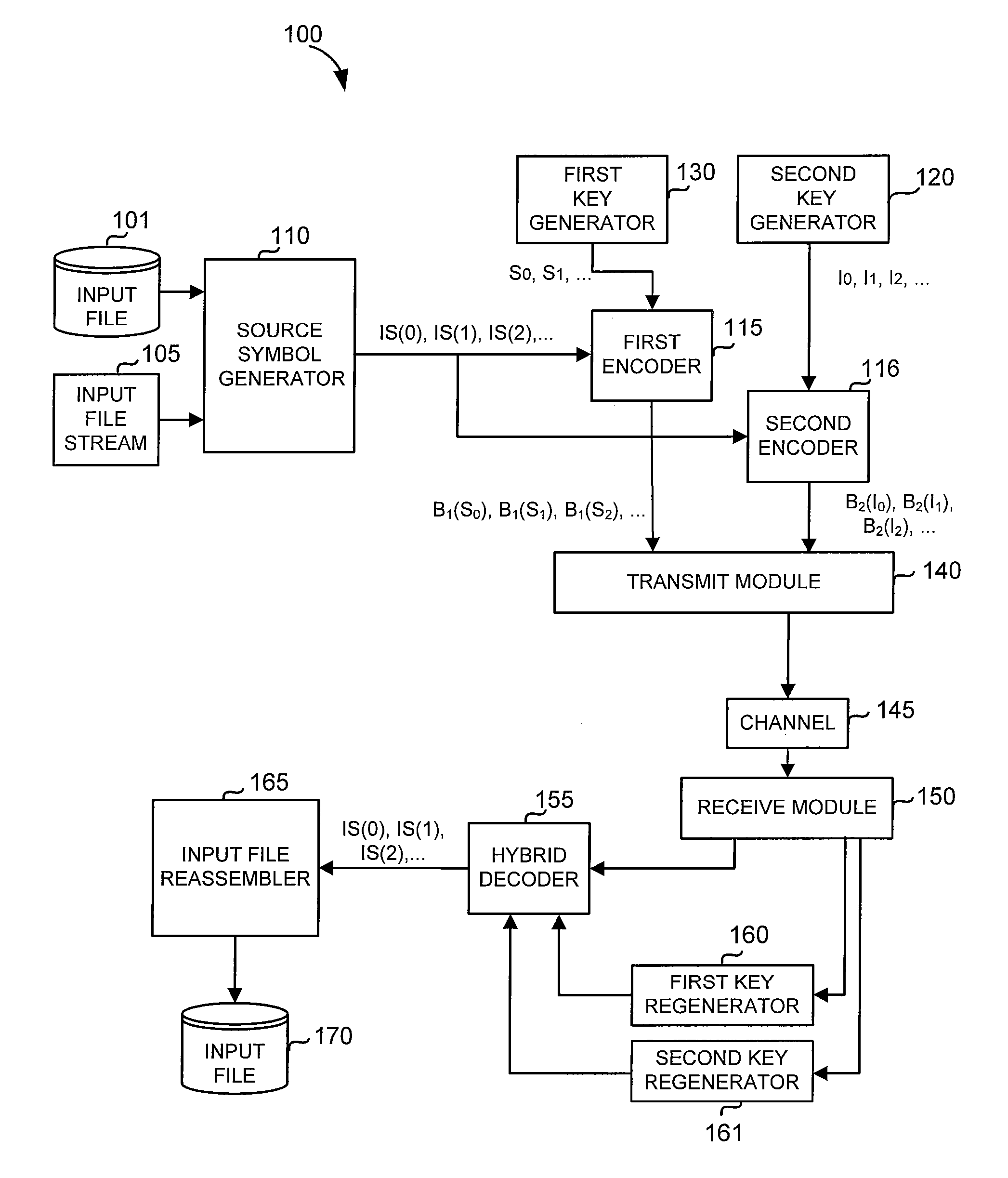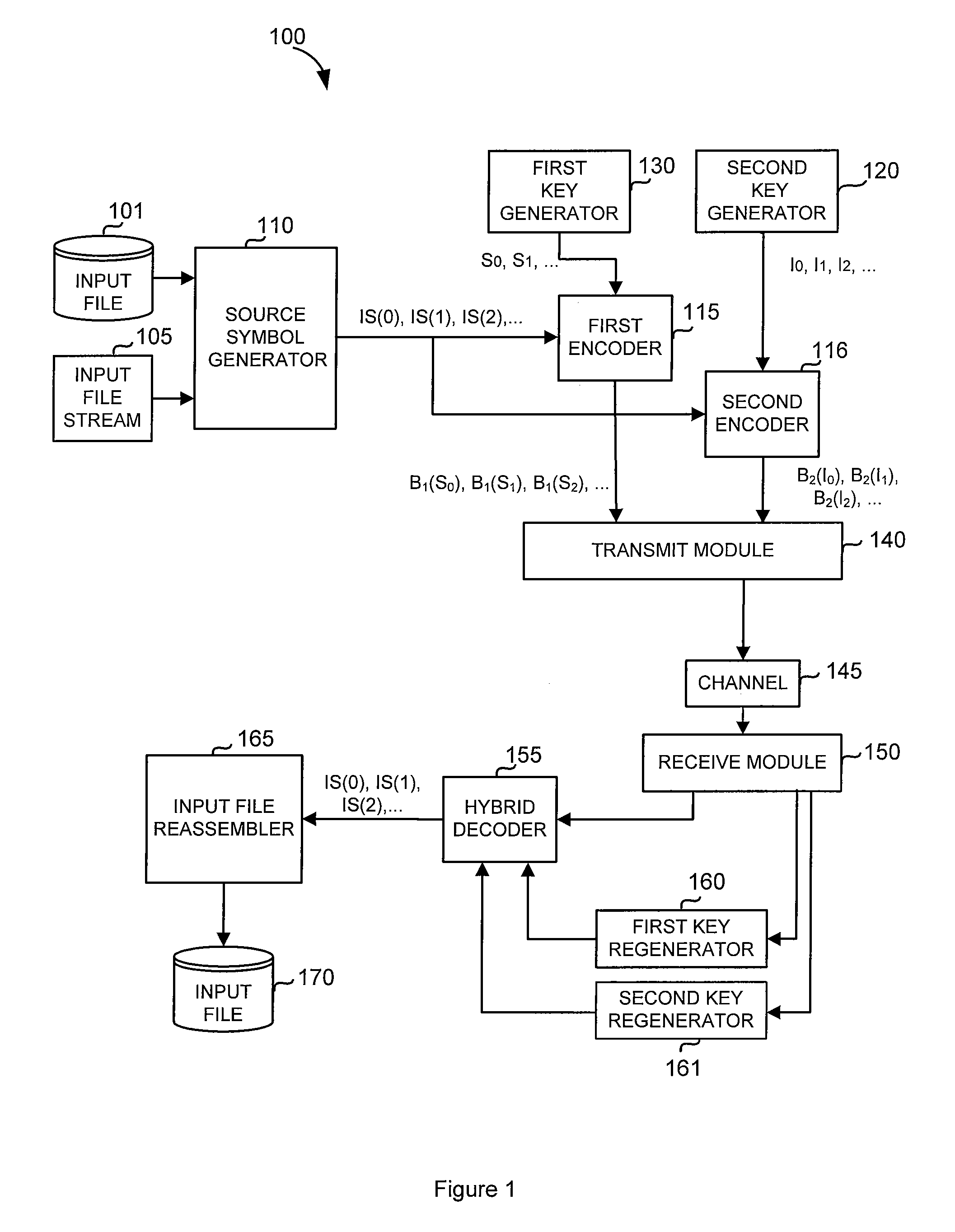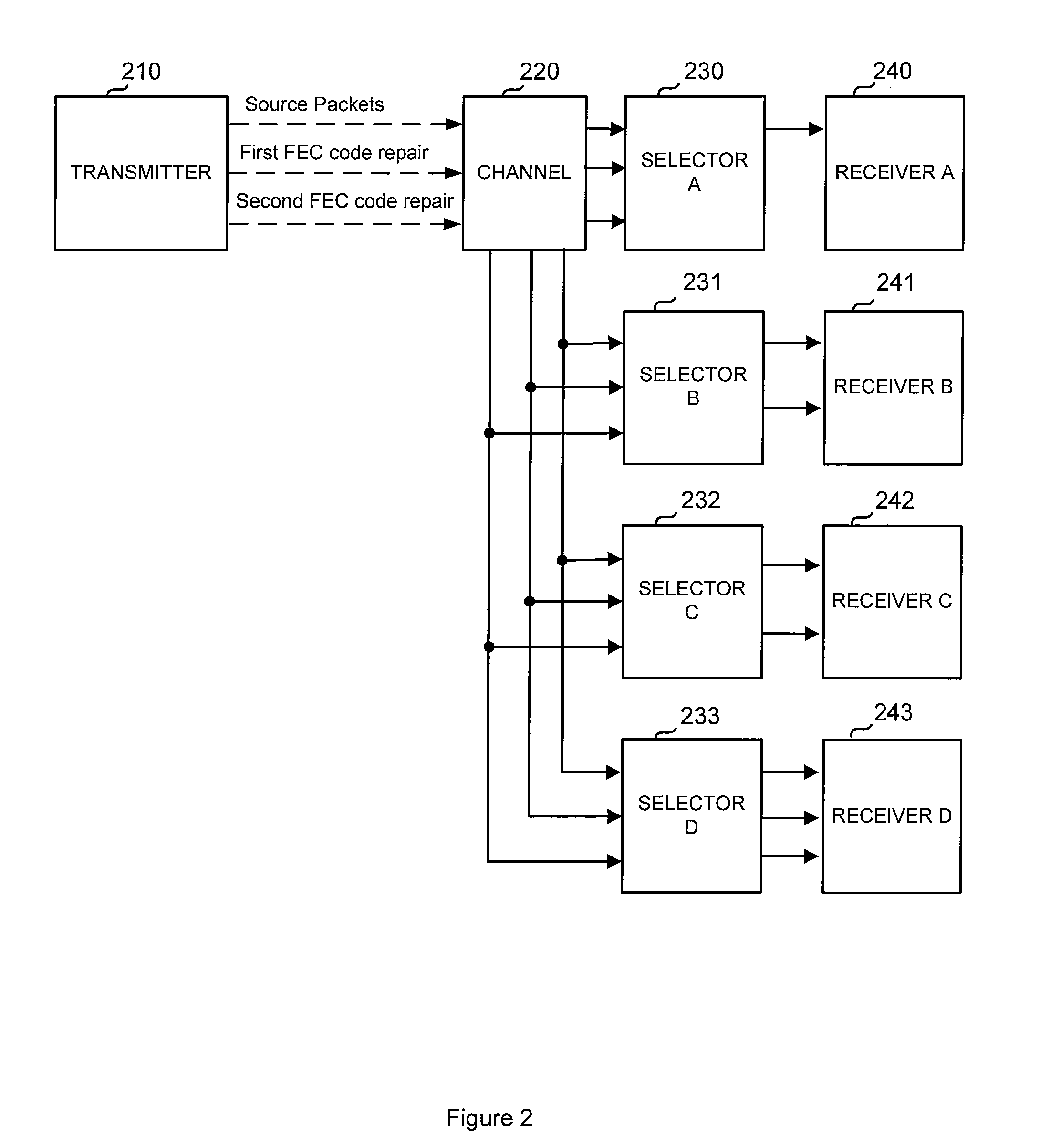Code generator and decoder for communications systems operating using hybrid codes to allow for multiple efficient users of the communications systems
a technology of communication system and code generator, applied in the direction of code conversion, code conversion, instruments, etc., can solve the problems of data loss, data transmission becomes more difficult, erasure, sent or stored by the sender is different, etc., and achieve the effect of more error protection
- Summary
- Abstract
- Description
- Claims
- Application Information
AI Technical Summary
Benefits of technology
Problems solved by technology
Method used
Image
Examples
Embodiment Construction
[0034] It is to be understood that the various functional blocks described herein may be implemented by a combination of hardware and / or software, and that in specific implementations some or all of the functionality of some of the blocks may be combined. Similarly, it is also to be understood that the various methods described herein may be implemented by a combination of hardware and / or software. Thus, where a computational step is performed, which might be described as “we then do step X”, it should be understood that such descriptions include electronic hardware and / or software, or the like, performing those steps, typically as part of a communications process and not involving human or manual interaction.
[0035] In embodiments described herein, data to be encoded is segmented into “source blocks,” each block comprising a number of packets of data, known as “source packets,” with the number of source packets in a block possibly varying between blocks. For each source block, a nu...
PUM
 Login to View More
Login to View More Abstract
Description
Claims
Application Information
 Login to View More
Login to View More - R&D
- Intellectual Property
- Life Sciences
- Materials
- Tech Scout
- Unparalleled Data Quality
- Higher Quality Content
- 60% Fewer Hallucinations
Browse by: Latest US Patents, China's latest patents, Technical Efficacy Thesaurus, Application Domain, Technology Topic, Popular Technical Reports.
© 2025 PatSnap. All rights reserved.Legal|Privacy policy|Modern Slavery Act Transparency Statement|Sitemap|About US| Contact US: help@patsnap.com



